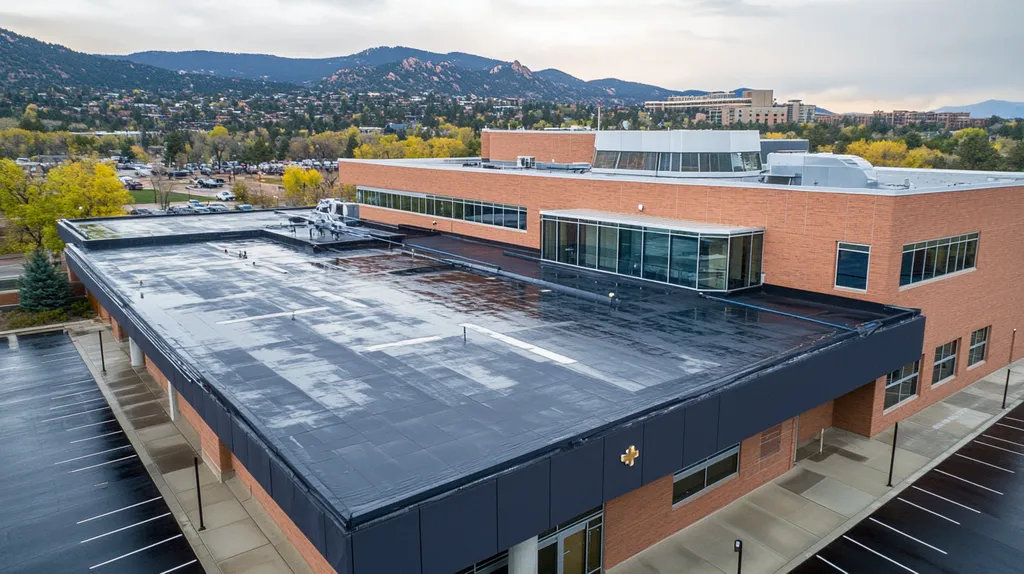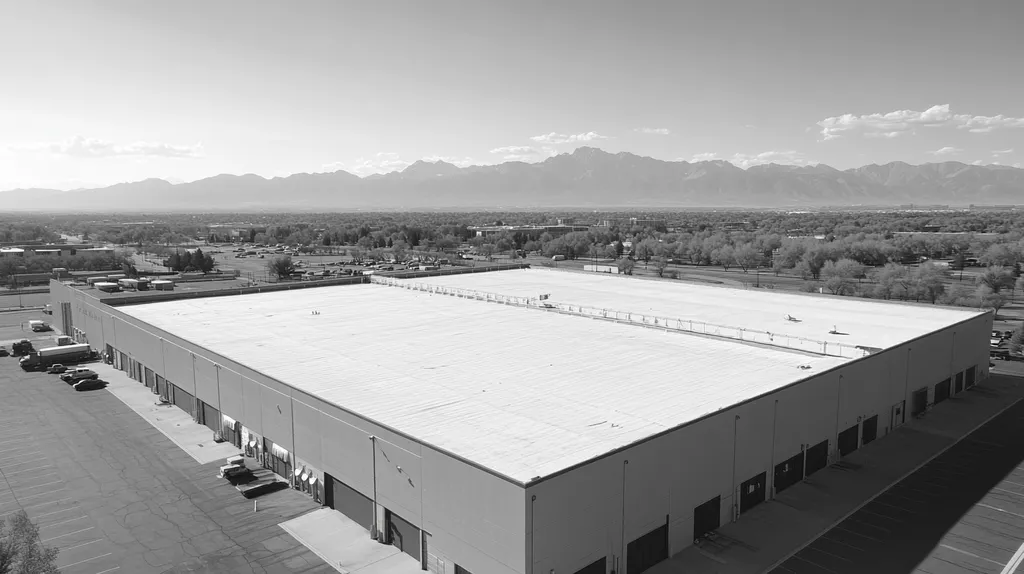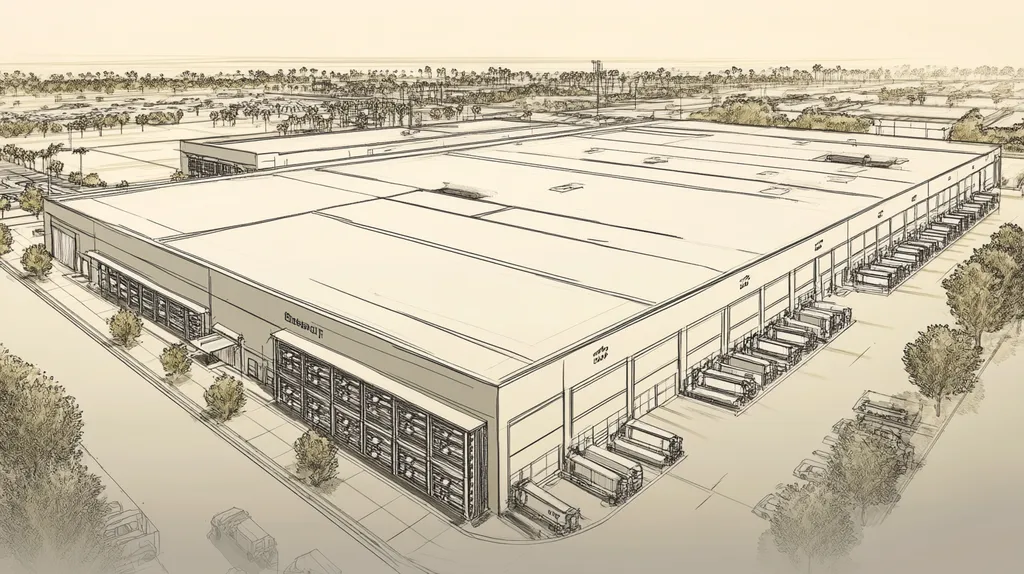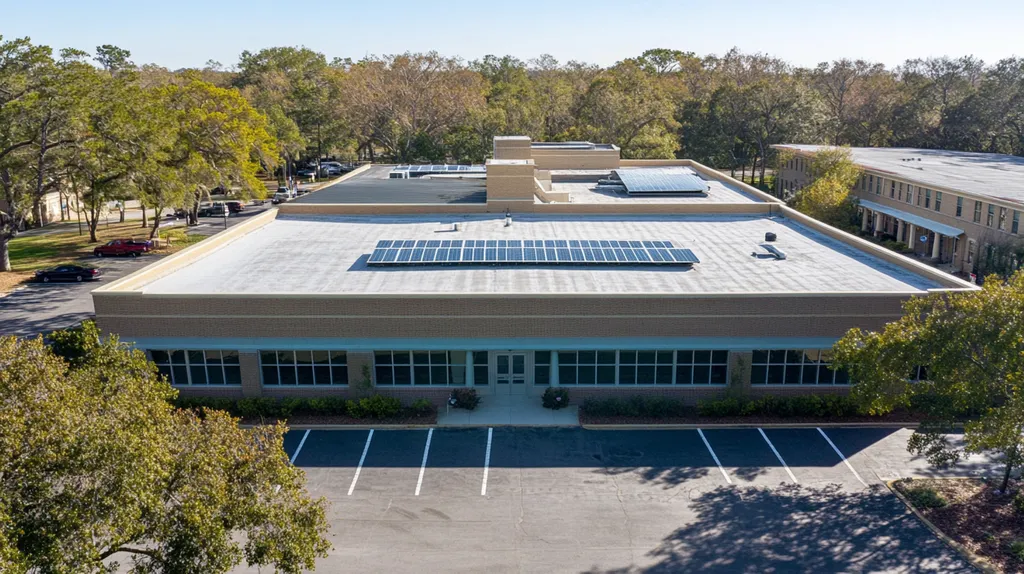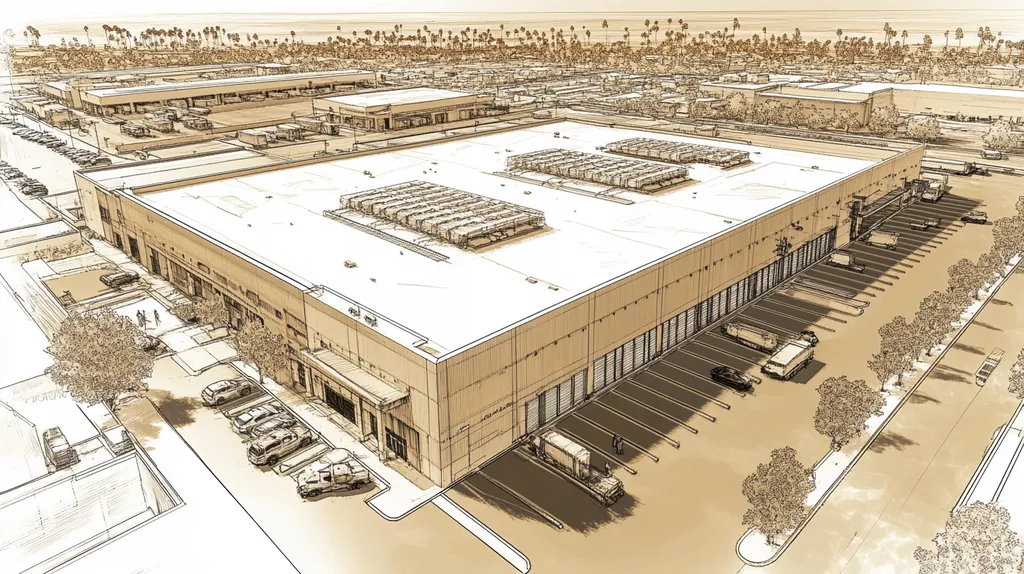Welcome to today’s Battle Royale featuring two roofing heavyweights: “TPO” in the east corner versus “PVC” in the west!
Tonight’s showdown pits these contenders against each other across six punishing rounds designed to test every aspect of their performance for Local Regulations for Commercial Roofing.
At stake? Millions in potential costs, decades of building protection, and the critical performance demands of modern commercial and industrial facilities.
Our professional judging panel will evaluate each round on technical merit, real-world performance, and value delivery. After all six rounds, we’ll declare our ultimate champion.
Ladies and gentlemen, facility managers and building owners… it’s time to rumble!
ROUND 1: INITIAL COSTS & INSTALLATION
In today’s competitive commercial roofing market, property owners face critical decisions that impact both immediate costs and long-term facility operations. The choice between TPO and PVC roofing systems represents a significant investment that demands careful evaluation of material costs, installation requirements, and project timing.
Recent market data reveals the dominance of TPO in commercial applications, highlighting the importance of understanding these systems’ relative strengths. The wrong choice can lead to cost overruns, extended facility disruptions, and compromised building protection.
Material Expenses
TPO maintains a clear cost advantage in the commercial roofing sector, with materials typically ranging from $0.85 to $1.60 per square foot. This pricing structure has helped drive TPO to capture 41% of single-ply roofing sales, significantly outpacing PVC’s 17% market share. (source: Roofing Contractor)
PVC materials command higher prices, usually between $1.75 and $3.25 per square foot. This premium reflects PVC’s enhanced chemical resistance and durability characteristics.
While both materials offer strong performance, TPO’s lower material costs provide a clear advantage for budget-conscious projects.
Installation Complexity
TPO installation procedures favor efficiency and simplicity, requiring standard roofing tools and conventional welding equipment. This straightforward approach reduces the likelihood of installation errors and minimizes specialized training requirements.
PVC installations demand more technical expertise and specialized welding equipment. The precise temperature control and detailed seam work necessary for proper PVC installation can increase labor costs and complexity.
The simpler installation requirements of TPO translate to lower labor costs and fewer potential complications, giving it another advantage in this category.
Project Timeline
TPO’s streamlined installation process typically results in faster project completion. Most commercial TPO installations can progress efficiently, with minimal delays for specialized procedures or equipment setup.
PVC installations often require additional time for proper setup, precise welding, and quality control measures. These extra steps can extend project timelines and increase facility disruption.
The faster installation times associated with TPO provide a significant advantage for businesses seeking to minimize operational interruptions.
ROUND 1 WINNER: TPO
ROUND 2: DURABILITY & LIFESPAN
The durability and lifespan of commercial roofing systems directly impact building protection and long-term operational costs. With replacement costs often exceeding $10 per square foot, choosing between TPO and PVC becomes a critical financial decision that affects decades of facility operations.
Modern commercial buildings face increasingly harsh conditions, from extreme weather events to chemical exposure from HVAC systems. Understanding how these materials perform under stress is essential for making informed roofing investments.
Material Composition and Resistance
TPO membranes combine polypropylene and ethylene-propylene rubber, creating a material that resists UV radiation and common environmental stressors. Their heat-welded seams provide excellent waterproofing capabilities when properly installed.
PVC membranes incorporate additional plasticizers and stabilizers that enhance flexibility and chemical resistance. This composition allows PVC to maintain its properties even when exposed to harsh industrial chemicals and pollutants.
While both materials offer strong baseline performance, PVC’s superior chemical resistance and proven track record in demanding environments give it a clear ADVANTAGE in this category.
Lifespan Expectations
TPO roofing systems typically deliver 15-20 years of service life under normal conditions. This performance depends heavily on installation quality and local environmental factors.
PVC systems consistently achieve 20-30 year lifespans, with some installations exceeding three decades. Their enhanced durability and resistance to environmental degradation contribute to this extended service life.
The significantly longer lifespan of PVC systems provides a clear ADVANTAGE in this category.
Maintenance Requirements
TPO systems require regular inspections and occasional seam maintenance to prevent premature aging. Their performance can degrade more quickly in areas with high UV exposure or chemical contamination.
PVC roofing typically demands less frequent maintenance intervention due to its inherent durability and chemical resistance. When repairs are needed, PVC remains weldable throughout its service life, simplifying maintenance procedures.
The reduced maintenance burden and easier repair characteristics of PVC establish another clear ADVANTAGE.
ROUND 2 WINNER: PVC
ROUND 3: PERFORMANCE FACTORS
Commercial roofing performance directly impacts facility operations, energy costs, and long-term property values. Modern buildings face increasingly complex demands, from extreme weather events to strict energy codes and sustainability requirements. Understanding how TPO and PVC systems perform across key metrics helps property owners make decisions that will affect their facilities for decades.
Energy Efficiency
Energy efficiency has become a critical factor in commercial roofing selection as utility costs continue to rise. Modern building codes increasingly mandate specific energy performance levels, making roofing choices more consequential than ever.
TPO membranes excel in solar reflectivity, typically reflecting 85-90% of solar radiation. This high reflectance helps reduce cooling costs significantly, particularly in warmer climates where air conditioning demands are highest.
PVC systems also offer good reflective properties but generally achieve slightly lower reflectance values than TPO. While both materials meet Energy Star requirements, PVC’s performance tends to degrade more quickly over time.
TPO’s superior reflective properties and sustained performance give it the clear “ADVANTAGE” in energy efficiency.
Weather Resistance
A roofing system’s ability to withstand diverse weather conditions directly affects building protection and maintenance costs. Modern commercial facilities must contend with increasingly severe weather events and temperature extremes.
TPO membranes provide excellent resistance to UV radiation and general weathering. However, they can become more brittle over time, particularly in regions with extreme temperature fluctuations.
PVC systems demonstrate superior resistance to environmental stresses, maintaining flexibility and performance even after decades of exposure. Their chemical composition allows them to better withstand temperature cycling and severe weather events.
PVC’s proven long-term weather resistance earns it the clear “ADVANTAGE” in this category.
Chemical Resistance
Chemical resistance becomes increasingly important as commercial facilities deal with more complex HVAC systems and industrial processes. Roofing exposure to exhaust emissions, cleaning solutions, and other chemicals can significantly impact system longevity.
TPO provides good baseline chemical resistance but can be vulnerable to certain industrial chemicals and cleaning agents. This limitation may require more careful maintenance protocols and chemical exposure prevention.
PVC offers superior resistance to a broader range of chemicals, including acids, bases, and industrial pollutants. This enhanced protection makes it particularly valuable for manufacturing facilities and buildings with extensive mechanical systems.
PVC’s comprehensive chemical resistance capabilities earn it another clear “ADVANTAGE” in this category.
ROUND 3 WINNER: PVC
ROUND 4: MAINTENANCE REQUIREMENTS
Effective maintenance strategies can mean the difference between a roof lasting 15 years versus 30 years in commercial applications. Poor maintenance decisions often lead to premature failures, with replacement costs averaging $15-20 per square foot. Recent updates to building standards are making maintenance requirements even more stringent for commercial properties.
Inspection Requirements
Commercial roofing inspections represent a critical maintenance component that directly impacts warranty coverage and system longevity. The 2025 FORTIFIED standards now mandate more rigorous inspection protocols and certified contractor requirements for commercial roofing systems. (source: Insurance Institute for Business & Home Safety)
TPO systems typically require semi-annual inspections focusing on seam integrity and surface degradation. These inspections can usually be performed by in-house maintenance staff following basic training protocols.
PVC systems demand quarterly inspections with particular attention to chemical exposure areas and mechanical system interfaces. These more frequent inspections often require specialized expertise to properly evaluate membrane condition.
TPO’s simpler inspection requirements and lower specialized labor needs give it a clear ADVANTAGE in this category.
Repair Procedures
When damage occurs, the complexity and cost of repairs significantly impact maintenance budgets. Understanding repair requirements helps facility managers allocate resources effectively.
TPO repairs can typically be completed using standard heat-welding equipment and readily available materials. The membrane’s consistent composition allows for straightforward patch applications and seam repairs.
PVC repairs often require more specialized techniques and equipment, particularly for aging systems. Chemical compatibility issues can complicate repair procedures and limit material options.
The simpler repair procedures and better material availability give TPO another clear ADVANTAGE.
Preventive Maintenance
Preventive maintenance strategies directly influence system longevity and performance reliability. Well-planned maintenance programs can prevent minor issues from becoming major failures.
TPO systems benefit from simple cleaning protocols and straightforward preventive measures. Their resistance to biological growth reduces the need for specialized treatments.
PVC systems require more complex preventive maintenance, including regular chemical resistance testing and specialized cleaning procedures. Their sensitivity to certain contaminants necessitates more careful monitoring.
TPO’s lower preventive maintenance requirements establish another clear ADVANTAGE in this category.
ROUND 4 WINNER: TPO
ROUND 5: SUSTAINABILITY CREDENTIALS
Environmental responsibility in commercial roofing has moved from optional to essential, with new regulations and market pressures demanding sustainable solutions. Commercial roofing decisions now directly impact building certification, energy costs, and corporate environmental goals. Understanding the sustainability profiles of TPO and PVC has become crucial for property owners facing increasing scrutiny of their environmental impact.
Environmental Impact
Commercial roofing must meet stringent building codes and safety standards while delivering environmental benefits. Both TPO and PVC systems must comply with International Building Code requirements for structural integrity, fire resistance, and performance standards. (source: Parsons Roofing)
TPO manufacturing processes produce fewer harmful byproducts and require less energy compared to other roofing materials. The material contains no chlorine or plasticizers, reducing its environmental impact throughout its lifecycle.
PVC production involves more energy-intensive processes and creates chlorine-based byproducts. While modern manufacturing has reduced these impacts, PVC still carries a higher environmental cost during production.
TPO’s cleaner manufacturing process and reduced environmental impact earn it a clear ADVANTAGE in this category.
Recyclability
TPO membranes are 100% recyclable at the end of their service life. The material can be processed into new roofing products or repurposed for other applications, creating a closed-loop system.
While technically recyclable, PVC presents more challenges in the recycling process. Its chemical composition makes separation and reprocessing more complex, often resulting in downcycling rather than true recycling.
The superior recyclability and simpler reprocessing requirements give TPO another clear ADVANTAGE.
Energy Efficiency
TPO’s highly reflective surface helps reduce cooling costs significantly. White TPO membranes can reflect up to 87% of solar radiation, exceeding Energy Star requirements and supporting green building initiatives.
PVC membranes offer good reflectivity but typically achieve lower ratings than TPO. Their performance tends to degrade more quickly over time, reducing long-term energy benefits.
TPO’s superior solar reflectance and sustained performance establish another clear ADVANTAGE in this category.
ROUND 5 WINNER: TPO
ROUND 6: SPECIALIZED APPLICATIONS
Specialized commercial roofing applications demand precise material selection to meet increasingly complex regulatory requirements. With new building codes requiring enhanced performance metrics and stricter installation standards, choosing between TPO and PVC becomes critical for compliance and long-term success.
The 2025 FORTIFIED standards have raised the bar for commercial roofing performance, particularly in areas prone to severe weather events. Understanding how these materials perform in specialized applications can prevent costly compliance issues and potential system failures.
High-Performance Requirements
Modern commercial facilities face stringent performance requirements driven by updated building codes and sustainability mandates. The 2025 FORTIFIED standards now require certified contractor installation and enhanced testing protocols for all roof-mounted components. (source: Building Design + Construction)
TPO systems excel in meeting these enhanced requirements through their consistent material properties and proven track record in demanding applications. Their superior weathering characteristics and reliable seam strength make them particularly suitable for high-performance installations.
PVC systems, while capable, often require more specialized installation techniques to achieve comparable performance levels. Their chemical composition can complicate compliance with certain building standards.
TPO’s straightforward compliance path and reliable performance establish a clear ADVANTAGE in this category.
Industrial Applications
Industrial environments present unique challenges for roofing systems, including exposure to chemicals, extreme temperatures, and mechanical stress. These applications demand materials that can maintain performance under harsh conditions.
TPO membranes offer good baseline resistance to common industrial contaminants but may show limitations with certain chemical exposures. Their performance can degrade more quickly in environments with high chemical concentrations.
PVC systems demonstrate superior resistance to industrial chemicals and maintain their properties even under extreme exposure conditions. Their enhanced chemical resistance makes them ideal for manufacturing facilities and chemical processing plants.
PVC’s superior chemical resistance and durability earn it a clear ADVANTAGE in industrial settings.
Critical Facility Requirements
Critical facilities like hospitals, data centers, and emergency response buildings demand roofing systems that provide exceptional reliability and minimal maintenance disruption. These facilities cannot tolerate system failures or extended maintenance periods.
TPO systems offer reliable performance but may require more frequent maintenance interventions as they age. Their seam integrity can become compromised in high-stress applications.
PVC membranes deliver superior long-term reliability and maintain their performance characteristics throughout their service life. Their enhanced durability and reduced maintenance requirements make them ideal for critical facility applications.
PVC’s proven reliability and reduced maintenance needs secure another clear ADVANTAGE in this category.
ROUND 6 WINNER: PVC
AND THE WINNER IS…
After six grueling rounds of technical evaluation, we have our verdict…
With a score of 3 rounds to 3, this championship bout ends in a DRAW! Both TPO and PVC have proven themselves worthy contenders in the commercial roofing arena.
TPO dominated the early rounds with superior cost efficiency, simpler maintenance requirements, and impressive sustainability credentials. Its performance in energy efficiency and installation simplicity makes it the clear champion for budget-conscious projects and buildings with straightforward requirements.
PVC fought back hard, claiming victory in durability, chemical resistance, and specialized applications. Its superior performance in demanding industrial environments and critical facilities establishes it as the undisputed heavyweight for high-stakes installations.
But remember, folks – every building tells its own story. Local regulations, climate conditions, and facility-specific requirements can dramatically impact roofing performance. While this analysis provides general guidance, property owners should always consult with qualified roofing professionals who can evaluate their unique situation.
In the high-stakes world of commercial roofing, there’s no substitute for matching your specific building requirements to the right material’s strengths. The true champion isn’t the material – it’s the property owner who makes an informed decision based on their facility’s unique demands.
FREQUENTLY ASKED QUESTIONS
Q. What are the initial costs for commercial roofs, TPO vs. PVC?
A. TPO typically has lower material costs ranging from $0.85 to $1.60 per square foot. In contrast, PVC materials range from $1.75 to $3.25 per square foot due to their enhanced durability and chemical resistance. This difference makes TPO a more budget-friendly option for commercial roofing projects.
Q. How long do commercial roofs last, TPO vs. PVC?
A. TPO roofs generally last between 15 to 20 years. In comparison, PVC roofing systems often achieve lifespans of 20 to 30 years, making them an attractive choice for long-term investments. The longevity of PVC is attributed to its superior durability and resistance to environmental factors.
Q. Which commercial roof performs better under extreme weather?
A. PVC roofs exhibit superior weather resistance, maintaining flexibility despite temperature fluctuations. TPO roofs can become brittle over time but still offer strong UV resistance. Due to these characteristics, PVC is often better suited for areas facing extreme weather conditions.
Q. What are maintenance requirements for commercial roofs, TPO vs. PVC?
A. TPO roofs typically require semi-annual inspections and simpler repair procedures. In contrast, PVC roofs demand more frequent quarterly inspections and specialized expertise for maintenance. This difference may influence a facility’s long-term maintenance costs and efforts.
Q. How sustainable are TPO and PVC commercial roofs?
A. TPO is considered more sustainable due to cleaner manufacturing processes and 100% recyclability. PVC, while recyclable, involves more challenging processes and has a greater environmental impact during production. Property owners focused on sustainability might favor TPO for these reasons.
Q. Which type of commercial roof is best for industrial applications?
A. PVC roofs are better suited for industrial applications due to their superior chemical resistance. While TPO offers decent industrial performance, it may not withstand harsh chemical environments as effectively as PVC. This makes PVC the preferred choice for manufacturing facilities.
Q. Can local regulations affect commercial roof choices?
A. Yes, local regulations can impact material selection, installation standards, and energy efficiency requirements. Ensuring compliance with updated building codes is essential for property owners. Understanding these regulations can help prevent costly penalties and ensure successful roofing projects.

